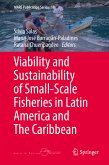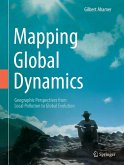This book highlights the first comparative long-term analysis of the negative impacts of large dams on riverine communities and on free-flowing rivers in Africa, the Middle East and Asia. Following the Foreword by Professor Asit K. Biswas, the first section covers the 1956-1973 period, when the author believed that large dams provided an exceptional opportunity for integrated river basin development. In turn, the second section (1976-1997) reflects the author's increasing concerns about the magnitude of the socio-economic and environmental costs of large dams, while the third (1998-2018) discusses why large dams are in fact not cost-effective in the long term.
Dieser Download kann aus rechtlichen Gründen nur mit Rechnungsadresse in A, B, BG, CY, CZ, D, DK, EW, E, FIN, F, GR, HR, H, IRL, I, LT, L, LR, M, NL, PL, P, R, S, SLO, SK ausgeliefert werden.









